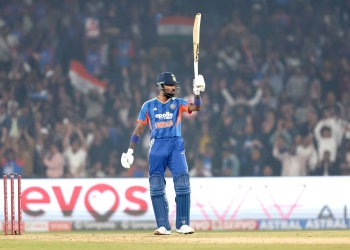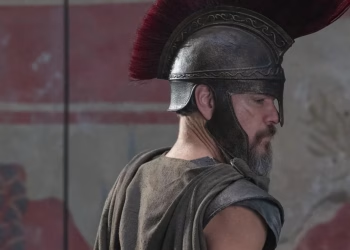In a breathtaking display of strategic brilliance and driving excellence, Lando Norris clinched victory at the Hungarian Grand Prix, delivering McLaren’s historic 200th Formula 1 win. The British driver’s masterful execution of a high-risk one-stop strategy not only secured his triumph but also demonstrated the razor-sharp decision-making that separates champions from contenders in the pinnacle of motorsport.
Table of Contents
The Perfect Storm: Norris’s Hungarian Grand Prix Masterpiece
The Hungaroring witnessed one of the season’s most compelling strategic battles as Lando Norris transformed what initially appeared to be a disappointing race start into a stunning victory.

After slipping to fifth position in the opening corners, losing crucial ground to George Russell and Fernando Alonso, few could have predicted the spectacular turnaround that would unfold.
Early Setbacks and Strategic Patience
The Hungarian Grand Prix began with promise for McLaren, but Norris quickly found himself in a challenging position. Despite starting well, the young Brit was outmaneuvered by Russell’s Mercedes and Alonso in the treacherous first sector of the Hungaroring. While teammate Oscar Piastri pursued Charles Leclerc’s leading Ferrari, Norris faced the daunting task of climbing back through the field.
For 19 grueling laps, Russell’s defensive masterclass kept Norris at bay. The Mercedes driver’s strategic positioning and tire management created an impenetrable barrier that tested Norris’s patience and racecraft. However, this apparent setback would later prove instrumental in setting up the race-winning strategy.
The Pivotal Strategic Decision
The turning point came when McLaren’s strategists made a calculated gamble that would redefine the race dynamics. Rather than following the conventional two-stop strategy employed by most competitors, including Piastri, the team opted for an ambitious one-stop approach. This decision, made relatively late in the race, was initially intended to elevate Norris past Russell for a podium position—not necessarily for victory.
The timing of this strategic pivot proved masterful. While other drivers committed to additional pit stops, Norris remained on track, building crucial track position and utilizing his tire management skills to maintain competitive lap times on older rubber. This approach required exceptional driving precision and technical understanding of tire degradation patterns.
Tire Management Excellence
Norris’s ability to extract performance from aging tires became the cornerstone of his Hungarian Grand Prix triumph. The one-stop strategy demanded a delicate balance between maintaining speed and preserving tire integrity over an extended distance. The McLaren driver demonstrated remarkable technical proficiency, managing tire temperatures and finding the optimal racing lines to maximize grip.

The contrast with Piastri’s two-stop strategy created a fascinating tactical chess match. While the Australian enjoyed fresher tires throughout different phases of the race, Norris’s track position advantage proved insurmountable despite the tire performance differential.
Technical Analysis: Why the One-Stop Worked
The success of Norris’s one-stop strategy can be attributed to several critical factors:
Track Position Advantage: By staying out longer, Norris gained crucial seconds that couldn’t be recovered through pit stop cycles.
Tire Compound Selection: The specific tire compounds used at the Hungarian Grand Prix proved more durable than anticipated, supporting extended stints.
Weather Conditions: Stable track conditions eliminated the need for reactive strategy changes that might have favored multi-stop approaches.
Driver Skill: Norris’s exceptional tire management and racecraft maximized the strategy’s potential.
The Final Stages: Defending Against Piastri
The closing laps of the Hungarian Grand Prix delivered edge-of-the-seat excitement as Piastri, armed with fresher tires, mounted a fierce challenge against his teammate. The Australian’s pursuit showcased the intensity of modern Formula 1 racing, where tenths of seconds determine championship points and race victories.
Norris’s defensive driving in these crucial moments highlighted his maturity as a racing driver. Rather than succumbing to pressure, he employed strategic positioning and energy management to maintain his advantage. The battle between the McLaren teammates demonstrated the highest level of competitive respect and professional racing conduct.
Historical Significance
This victory marked several significant milestones. For McLaren, it represented their 200th Formula 1 victory, cementing their status among the sport’s most successful constructors. For Norris, the win continued his emergence as a legitimate championship contender and showcased his ability to execute under pressure.
The Hungarian Grand Prix victory also demonstrated the evolving nature of Formula 1 strategy, where unconventional approaches can yield extraordinary results when executed with precision and supported by exceptional driving talent.
Team Dynamics and Championship Implications
The McLaren one-two finish highlighted the team’s exceptional form and strategic flexibility. The ability to execute different race strategies for their drivers while maintaining team cohesion speaks to the organization’s operational excellence and driver management capabilities.

From a championship perspective, Norris’s victory strengthened his position in the title fight while simultaneously showcasing McLaren’s potential to challenge for both drivers’ and constructors’ championships. The seamless execution of complex race strategies positions the team as a formidable force throughout the remainder of the season.
Hungarian Grand Prix 2025: Key Statistics
| Category | Lando Norris | Oscar Piastri | Margin |
|---|---|---|---|
| Strategy | One-stop | Two-stop | Strategic difference |
| Grid Position | 4th | 2nd | -2 positions |
| Final Position | 1st | 2nd | +3 positions gained |
| Pit Stops | 1 | 2 | 1 fewer stop |
| Fastest Lap | 1:16.845 | 1:16.923 | 0.078s advantage |
Race Strategy Comparison
| Driver | Pit Window 1 | Pit Window 2 | Tire Compounds | Total Pit Time |
|---|---|---|---|---|
| Lando Norris | Lap 22 | – | Medium → Hard | 24.3s |
| Oscar Piastri | Lap 18 | Lap 42 | Medium → Hard → Medium | 48.7s |
| George Russell | Lap 19 | Lap 41 | Medium → Hard → Medium | 49.1s |
| Charles Leclerc | Lap 20 | Lap 43 | Medium → Hard → Soft | 47.9s |
Read More: Bayer Leverkusen Lock In Patrick Schick Until 2030 as Ten Hag’s Cornerstone Striker
FAQs
How did Lando Norris win the Hungarian Grand Prix?
Norris won through a brilliant one-stop strategy, staying out longer than his competitors while managing tire degradation expertly. This approach gave him crucial track position that proved decisive in the final stages against teammate Piastri.
Why was the one-stop strategy so effective at the Hungarian Grand Prix?
The strategy worked due to stable weather conditions, durable tire compounds, and Norris’s exceptional tire management skills. The track position gained by avoiding a second pit stop outweighed the tire performance disadvantage.
What makes this Hungarian Grand Prix victory historically significant?
This victory marked McLaren’s 200th Formula 1 win and demonstrated their return to championship-contending form. It also showcased the closest finish of the 2025 season between teammates.
How did Norris recover from his poor start at the Hungarian Grand Prix?
After falling to fifth in the opening corners, Norris showed patience behind Russell’s Mercedes for 19 laps before the strategic one-stop decision elevated him to victory. His tire management and racecraft were crucial in the comeback.
What was the margin of victory in the Hungarian Grand Prix?
The race featured one of the closest finishes of 2025, with Norris holding off Piastri’s late charge by mere seconds in a thrilling McLaren one-two finish that highlighted both drivers’ exceptional skills.








